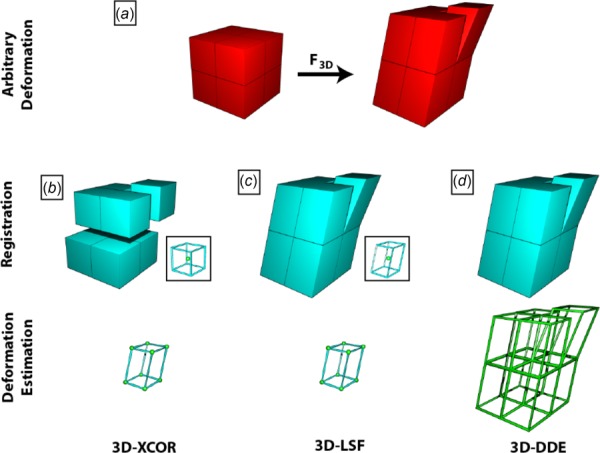Fig. 1.

Schematic representation of how 3D-XCOR, 3D-LSF, and 3D-DDE calculate 3D deformation gradient tensors. (a) Representation of a volumetric image divided into eight volumes with original undeformed image (left) and deformed configuration (right). (b) 3D-XCOR estimates how each reference volume maps to an equal number of voxels in the deformed image. Considering the centroid of each region (spheres, inset and vertices of bottom), 3D-XCOR finds a best fit displacement. (c) The 3D-LSF method improves on 3D-XCOR by warping the reference regions before finding the best match in the deformed image. Like 3D-XCOR, it considers the displacements of the centroids of these regions when calculating deformation (inset and bottom row). (d) 3D-DDE accurately calculates the deformation of all eight regions independently (outlines, bottom row), directly from the warping function that maps the undeformed volumes to the deformed volumes.
